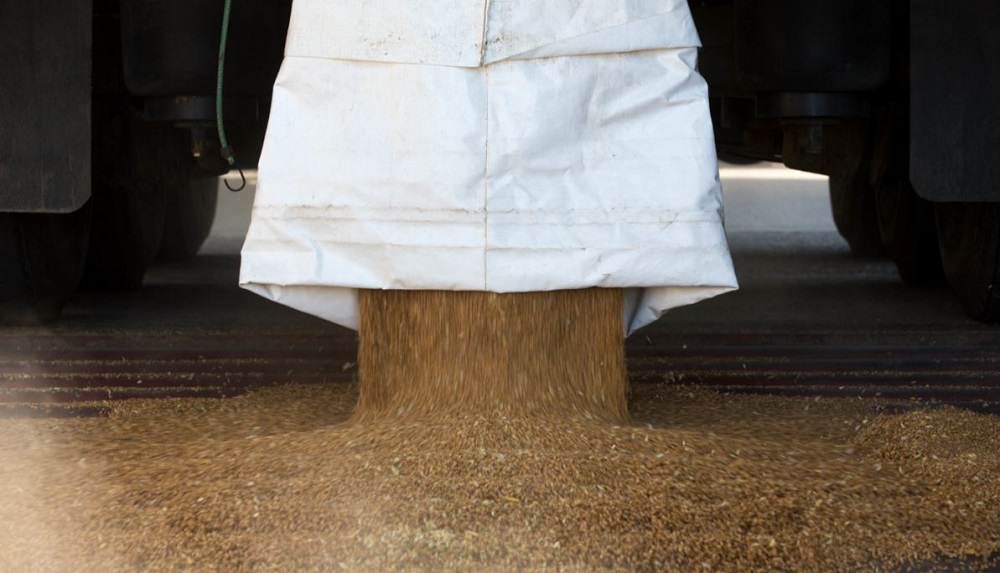- Home
- Knowledge library
- How to clean and prepare a grain store
How to clean and prepare a grain store
Thorough grain store preparation and hygiene help to eliminate sources of contamination from storage fungi, insects and mites. Use these checklists to help ready and monitor the health of your stores.
An integrated pest management (IPM) approach
Insects and mites are most likely to be introduced from the store structure and equipment. Even small quantities of grain provide a food source, allowing pest problems to build. It is also essential to manage rodent populations.
However, cleaning alone does not eliminate all pests in empty stores, nor will pesticide treatment. The key to safe storage of grain is to use an integrated pest management (IPM) approach to prevent, monitor/detect and control any issues.
Pre-harvest store preparation checklist
|
Action |
ü |
|
Inspect/repair areas of potential water ingress (e.g. external fans, guttering and roofs) |
|
|
Check that the store is proofed against rodent and bird entry |
|
|
Ensure there is adequate space above grain for ventilation |
|
|
Test/maintain equipment |
|
|
Use shatter-resistant bulbs and fit shatter-proof light covers |
|
|
Know the storage history (e.g. livestock housing or potato storage) |
|
|
Clean the store and equipment thoroughly |
|
|
Set up insect traps and rodent bait boxes |
Use an industrial vacuum cleaner to remove debris, including from harder-to-reach areas. Conveyor systems may harbour relatively large amounts of the storage fungus Penicillium verrucosum. Ensure rubbish, including vacuum-cleaner contents, is removed and disposed of well away from the store.
Use appropriate food-approved disinfectant/sanitiser and leave to dry before storing grain. The permitted cleaning products and previous store uses may depend on supply chain restrictions – check for approval and suitability before use.
Use of insect traps
Place insect traps, such as pitfall cone traps, floor traps and bait bags, in corners and at wall/floor junctions every 4–5 metres around the store. Check them weekly. If stored product insects or mites are found, place additional traps to pinpoint the source of the infestation. Further hygiene measures may help eliminate the source.
Rodent management in and around stores
The presence of rats and mice, in and around grain stores, may result in losses to grain and grain quality, and damage to buildings and machinery. As part of a rodent-management plan, always:
- Use secure, commercially approved bait boxes
- Have a sufficient number of baiting points
- Note the locations of bait boxes
- Record bait quantities
- Place bait boxes outside the store
- Prevent bait contamination of grain
- Minimise exposure to non-target animals
- Collect and dispose of dead rodents
- Inspect regularly
- Remove bait at the end of the treatment
For information on rodent-bait use, visit the Campaign for Responsible Rodenticide Use (CRRU) website.
Store preparation: hazards and management
|
Key hazards |
Risk score |
Management |
||
|
Preventative measures |
Monitoring procedures |
Corrective actions |
||
|
Fungi with potential to cause mycotoxins |
** |
Clean equipment and store |
Inspect cleanliness |
Targeted cleaning |
|
Insects and mites |
** |
Clean equipment and store |
Use traps |
Apply pesticide at recommended rate |
|
Pesticide residues |
* |
Use approved products in recommended manner |
Check records of pesticide application |
Review applications and practices |
|
Rodents and rodent faeces |
* |
Clean store, remove (where possible) potential places of shelter and prevent entry |
Check for rodent presence |
Use rodenticides in recommended manner; targeted cleaning and proofing |
|
Birds and bird faeces |
* |
Clean store and prevent entry |
Check for bird presence |
Targeted cleaning and proofing |
|
Glass |
* |
Glass control procedures |
Check for compliance with procedures |
Remove and replace or protect glass |
HACCP risk rating: *** high risk, ** medium risk, * low risk
 Tim Scrivener
Tim Scrivener
Topics:
Sectors:
Tags:

